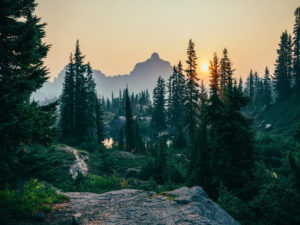It’s no secret that Hollywood and cinema lovers alike love stories about survival. Yet, whether you’re a fan of “The Martian” or prefer “The Revenant,” these films forget a lot of pertinent information.
Here are a few realities, along with some pointers—just in case you ever find yourself in a similar situation.
1. It Isn’t Easy to Start a Fire
One of the best scenes in “Cast Away” is when Tom Hanks builds a fire. He sweats and struggles, but after many tries, he comes out triumphant. The intensity depicted is incredibly accurate. Without a lighter or a match, could you start a fire?
For many of us, the answer is probably no. Maybe you’re aware of that trick where you rub two sticks together, but that won’t get you very far if you don’t have the right base. Fire is a source of warmth and fuel, and it’s essential for survival.
Luckily, nature provides a ton of resources for this very process. From birch tree bark to spruce sap, there are several viable options to discover. The technique matters, too, so work on that while you’re at it—this information could come in handy in the future.
2. Food and Water Are Scarce
Maybe this point is obvious—and usually, survival flicks make it a point to address food and water scarcity. However, it takes many individuals in this situation days to locate a source of nutrition. Even then, the chances that they know what they can and can’t eat are slim. Characters often consume a random weed and somehow never experience an upset stomach.
“In reality, you won’t find many edible plants when you’re stranded. Luckily, you can use a simple edibility test to make those distinctions for yourself.”
In reality, you won’t find many edible plants when you’re stranded. Luckily, you can use a simple edibility test to make those distinctions for yourself. Separate the plant into five parts—the leaves, stems, flowers, buds, and roots. Rub one piece of the plant on your wrist for 15 minutes and wait to see if you have an allergic reaction. If nothing happens, you can move onto eating a small part.
When it comes to water, the area around you matters. Most of the time, it’s undrinkable—you can’t do much with saltwater or still water. Survivors need to look elsewhere for cleaner sources, like streams or rivers. Even then, they may experience health problems and dehydration.
3. Construction and Design Matter
In many survival movies, characters can find shelter relatively quickly. An abandoned cave or set of trees appears out of thin air so that they can escape the horrible weather. Those that face a zombie apocalypse often have an underground bunker at their disposal. In reality, this process isn’t easy. Even if you do find a spot to build, it’s all about how you construct the shelter itself.
A simple garage is another option, and one that’s far more accessible than a nuclear missile silo. As long as you take certain measures to manage the cold, reinforce the door itself and stock provisions, you’ll have a serviceable shelter that’ll work on a short or long-term basis.
Also Read: 6 Things Movies Consistently Get Wrong About Hacking
If lost in the woods, you can gather logs in a teepee formation or build a wigwam. A lean-to is one of the more common primitive structures. In the tundra, you can craft a quinzhee, which is a simpler version of an igloo. As for the beach, you won’t have much luck, unless you came with some rope and a tarp.
4. Mental Health Plays a Huge Role

When stranded on a deserted island, your state of mind matters. Though we’re all different, our brains are the same—even the highest of expertise can’t save you from yourself. Films touch on mental health in a few different ways. That said, it’s essential to explore further how it impacts an individual’s decision-making skills.
The wilderness is often incredibly lonely. Survivors begin to talk to inanimate objects and animals to fill that social void. Some also pray or meditate to find a sense of calm. Time spent in the sun makes a huge difference, as Vitamin D improves bodily function and clears your mind. People in these situations can find several ways to cope. No matter how it happens, it’s essential.
A positive mental attitude directly reflects your ability to make crucial decisions. High levels of stress are detrimental, as they exhaust us. When you’re down on yourself, you’re unable to search for nutritious food and create shelter. Ultimately, your chances of survival drop.
Take Note of These Survival Shelter Differences
A blockbuster film probably isn’t the best means to figure out how to live in the wilderness. Now, however, you’re well on your way to becoming the next Bear Grylls. Let’s hope you never actually have to use this knowledge.